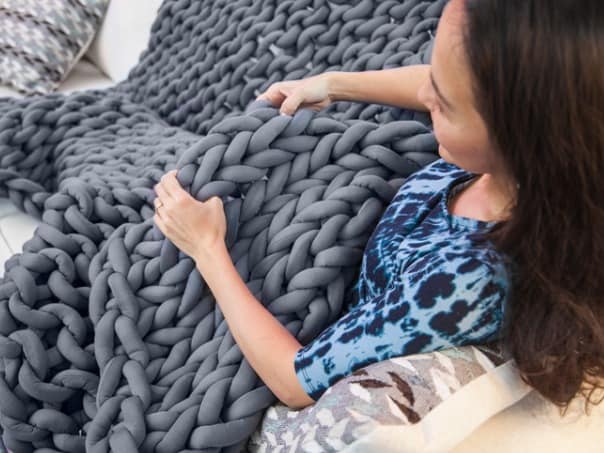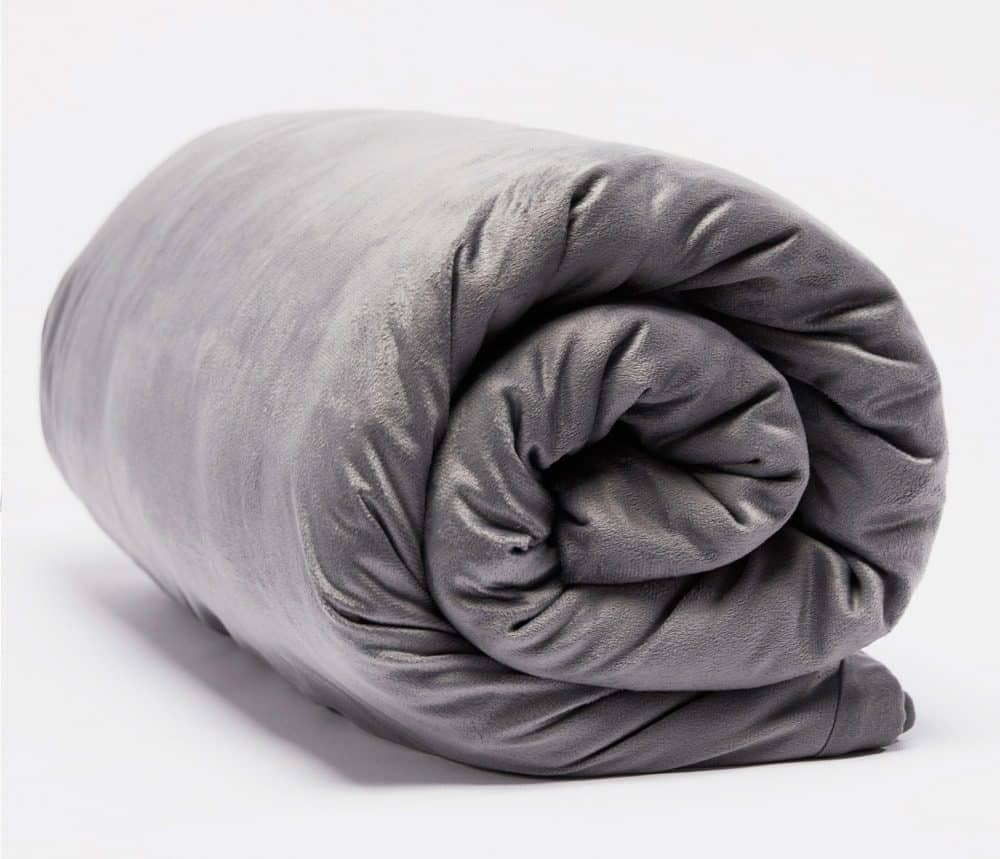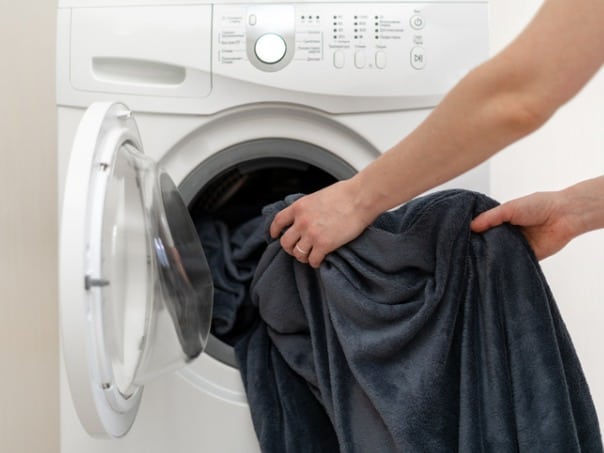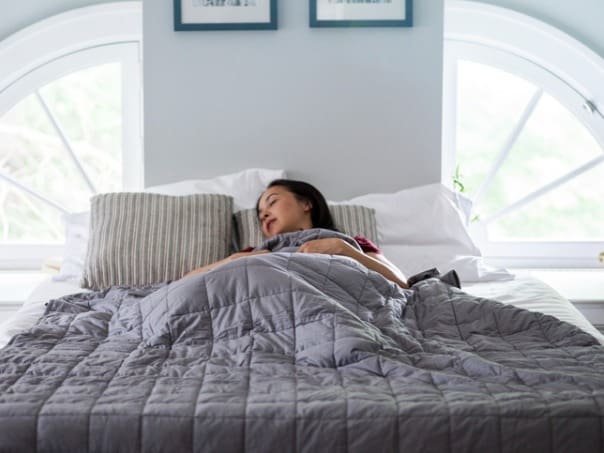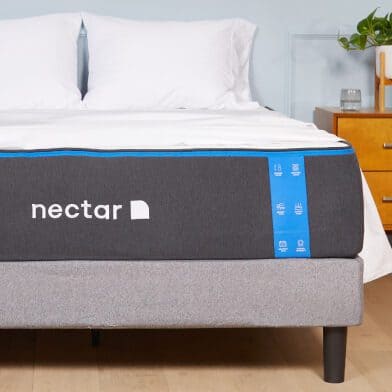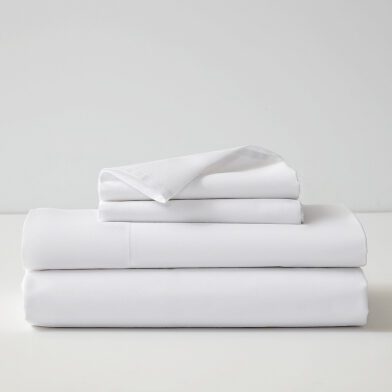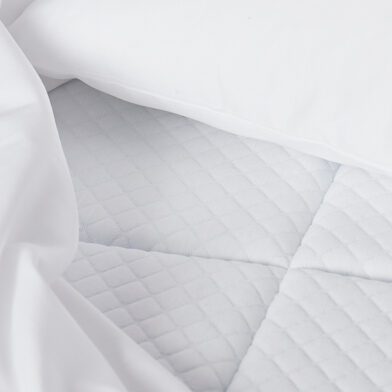
How to Make A Weighted Blanket? DIY Tips to Make Your Own
Last Updated on Jan 03, 2023
Weighted blankets are often recommended to children and adults who have stress and anxiety. The heavy weight of the blanket provides the user with a deep-pressure touch that can help calm the central nervous system. Dr. Temple Grandin’s research on the effects of deep-pressure touch on the nervous system led to the creation of the weighted blanket. Compared to your usual blankets, this one is filled with weighted discs, poly pellets, or glass or plastic beads even. Hence they are heavier, plus they deliver pressure to boost relaxation.
Who Can Use Weighted Blankets?
Children
Children who are having trouble self-regulating may find that the weight of this blanket can help relax them. It is often used as a tool for those who exhibit signs of anxiety, post-traumatic stress disorder PTSD, Fetal Alcohol Spectrum Disorder (FASD), Autism Spectrum Disorder (ASD), and Attention Deficit Hyperactivity Disorder (ADHD) just to name a few.
Adults
Adults who exhibit the same symptoms mentioned above also find using weighted blankets to be heaven-sent as they feel calm and relaxed underneath it. These blankets can be used by adults who are suffering from chronic pain such as restless leg syndrome and insomnia even. Stress can also contribute to sleepless nights for some parents, but the feel of the weight of this therapeutic blanket may help them to get a good night’s sleep.
When can we use weighted blanket
Safety Precautions When Using a Weighted Blanket
- Children under two years old should not use a weighted blanket.
- Children should be able to put it on and remove the blanket by themselves. Their head and neck should never be covered.
- Children should never use weighted blankets designed for an adult weight class.
- Weighted blankets must never be used as a restraint
- Weighted blankets work best when self-applied. The person should give consent for its use. Any sign of refusal, either verbal or non-verbal, should be respected.
Tips on How to Make a Weighted Blanket
Now that you have an idea of how a weighted blanket for kids and adults works, you may find it’s perfect for a child who has autism or other processing disorder. If you would like to add a personal touch, making a weighted blanket for your child is well within your grasp.
For parents whose children are happy under the weight of the blanket, here are the materials you will need for this project:
- Weighted stuffing beads
- Durable fabric for the front and the back
- Ruler
- Scissors
- Pins
- Sewing machine
- Kitchen scale
- Tailor’s chalk
- High-quality thread
For the measurements, you will need to estimate the size of the blanket depending on who is going to use it. If it is for your child, it should be big enough to cover their body. You will also need to figure out the number of squares that you will be using in the blanket for the filling. With regards to the weight, it should be 10 percent of the user’s body weight and add to that figure a few more pounds. For children, it’s best to consult with their therapist to reach the right number.
Steps to make a DIY weighted blanket:
Step 1:
Place the correct sides of both front and back of the fabrics together, then measure two inches on the long sides as well as one short side and sew together, leaving the top open to pour in your poly pellets or any weighted balls you’re going to use (do not fill yet). Sew the lines then turn your fabric inside out. It would be a good idea to iron the edges so that you will be working with crisp edges.
Step 2:
Measure the remaining area in your blanket then divide them into even squares. Divide the pellets using this formula: weight of blanket in ounces/ the number of squares that you have. The result will be the number of ounces of poly pellets that you will use per square. Use the kitchen scale to measure correctly.
Step 3:
Sew the vertical lines to create the channels where you will be pouring your poly pellets. Once done, shake the fabric to help settle the pellets at the bottom. Measure the inches from the bottom seam based on the number of squares then sew horizontal lines accordingly until you have reached the top.
Step 4
Fold the remaining fabric on top then sew to seal the last row of squares and you are done! You now have completed your very own weighted blanket DIY.
What to Consider When You Make a Weighted Blanket?
Tools
If you want to make a weighted blanket, you will need to determine if you have the tools you will need which includes the sewing machine, the needles appropriate for the type of fabric that you are going to use, a large worktable and so on.
Experience
Another thing to consider when making a DIY weighted blanket is whether you have the experience to do this kind of project. If this is your first time, try something small like lap pads, bean bags, and the like so you will know how to work with the weight of the pellets and the fabric too.
Time
This kind of project will take hours or even days to complete, especially when you add the time it will take for you to buy your materials, measuring, cutting, weighing, and so on. It is important that you have ample time for this work if you are going to make your own weighted blanket.
Learning a new skill
If you have checked the steps on how to make a weighted blanket, and it’s your first time attempting to make one, be patient in learning this new skill. It’s good that you are interested in making a weighted blanket for anxiety to help your child stay asleep at night, but if you are planning on making one for your own use, you will be making an adult-sized weighted blanket which will not be a walk in the park. Keep in mind that blankets for kids are easier to handle because of their small size, but when your weighted blanket DIY is much larger, it will take a good set of sewing skills to accomplish this task.
Hire a professional
Although the excitement of finishing a customized DIY weighted blanket on your own is understandable, you will need to consider carefully if it is worth spending hours on end as opposed to having a sewing professional do the job for you. Keep in mind that you may be dealing with spilled poly pellets or beads, broken needles, and such, which is why you will need to consider all the possible scenarios before taking on the task of learning how to make a weighted blanket. If you feel that the weighted blanket DIY project that you are considering will be too time-consuming, spend money on a professionally made blanket instead.
The Last Word
If making your own DIY weighted blanket is something that you are planning to do, it can be rewarding. This is especially true when you are making the blanket for someone with post-traumatic stress disorder, obsessive-compulsive disorder, or depression and the like. With the steps mentioned above, you can learn how to make a weighted blanket on your own. However, as noted earlier, if you find that your skills are lacking, or that you don’t have time to make one on your own, look for artisans who make custom weighted blankets to help with calming your child who has a mental health issue, or you for that matter.
And if you really don’t have the time, and you are suffering from sleep disorders or other chronic problems, Nectar offers a great high quality weighted blanket for adults with a removable cover. Try one out, see how it makes you feel, and if you love it, then try your hand at making your own weighted blanket with fun colors and designs for your child!


